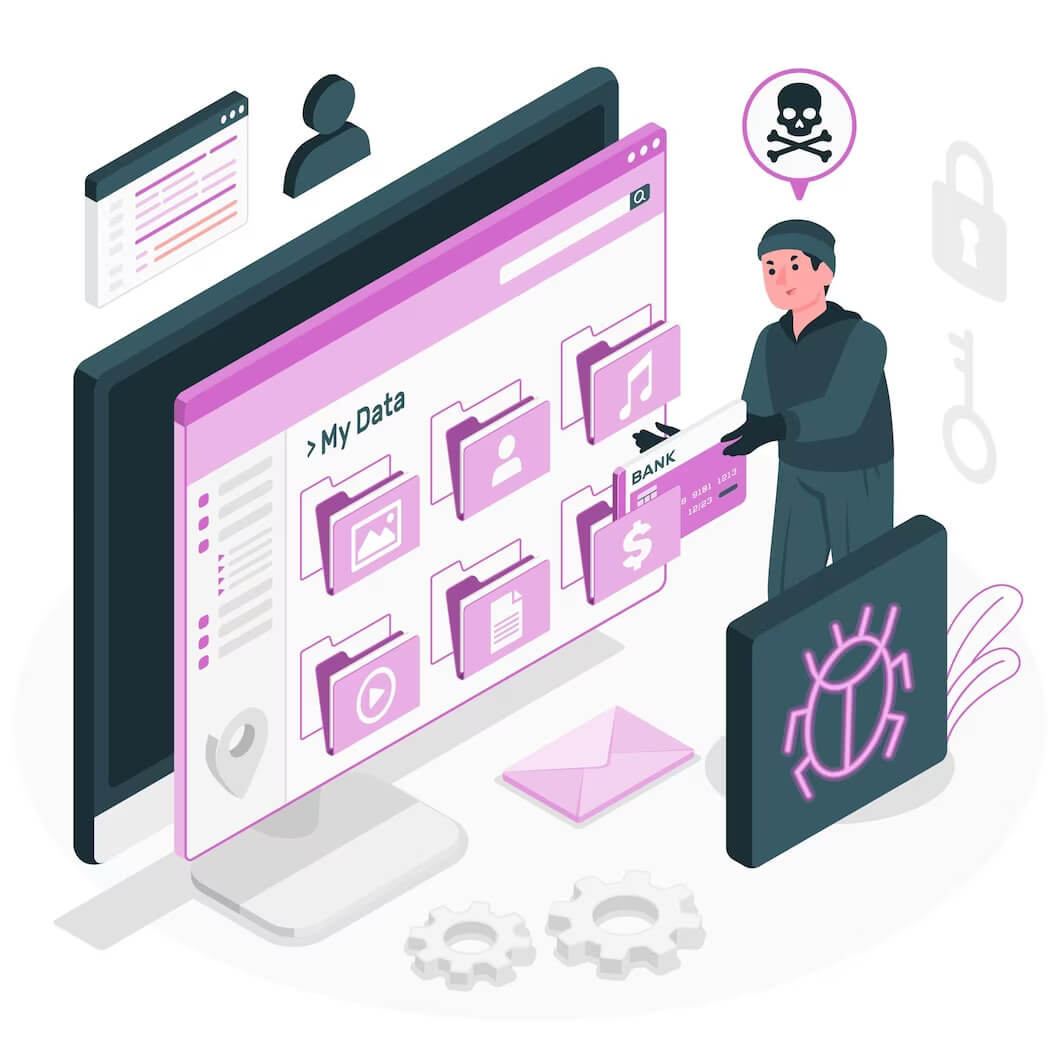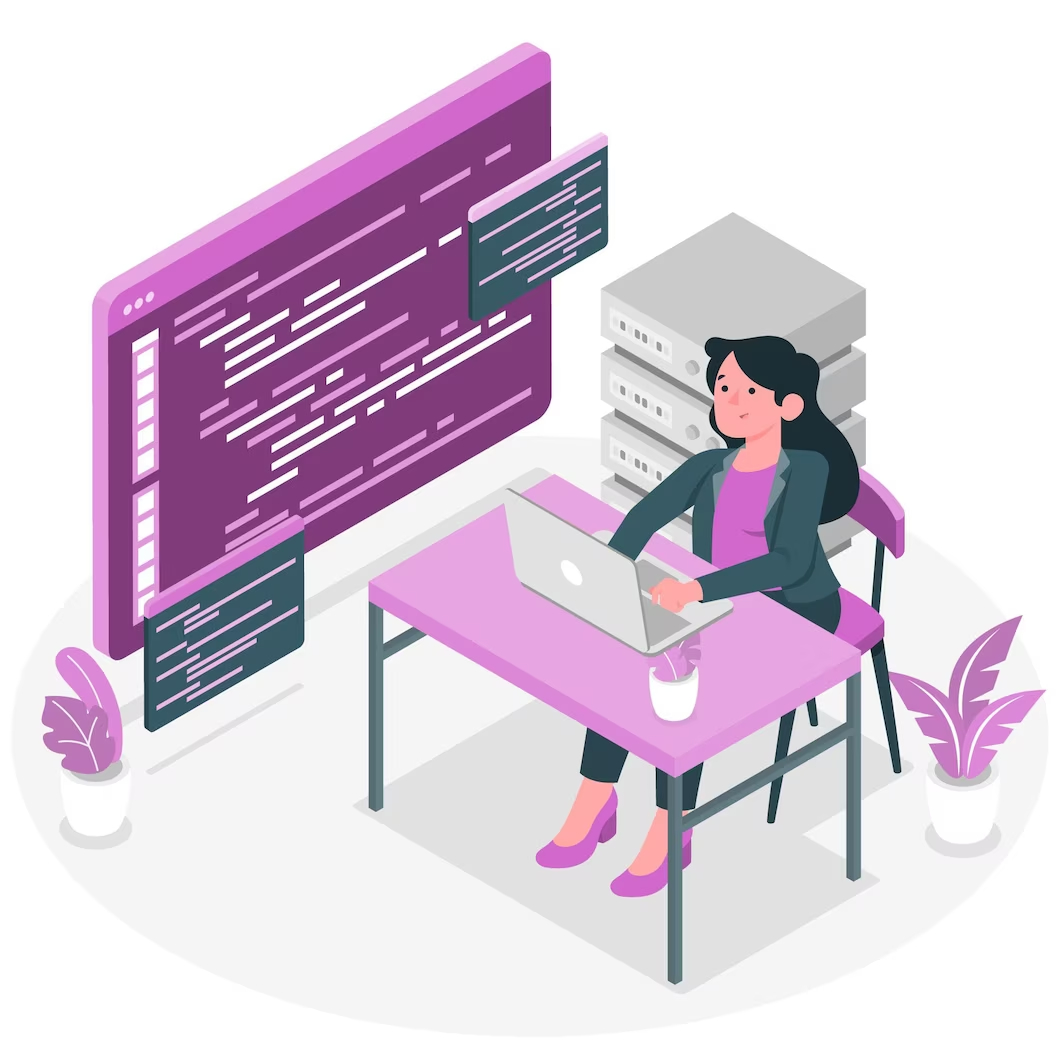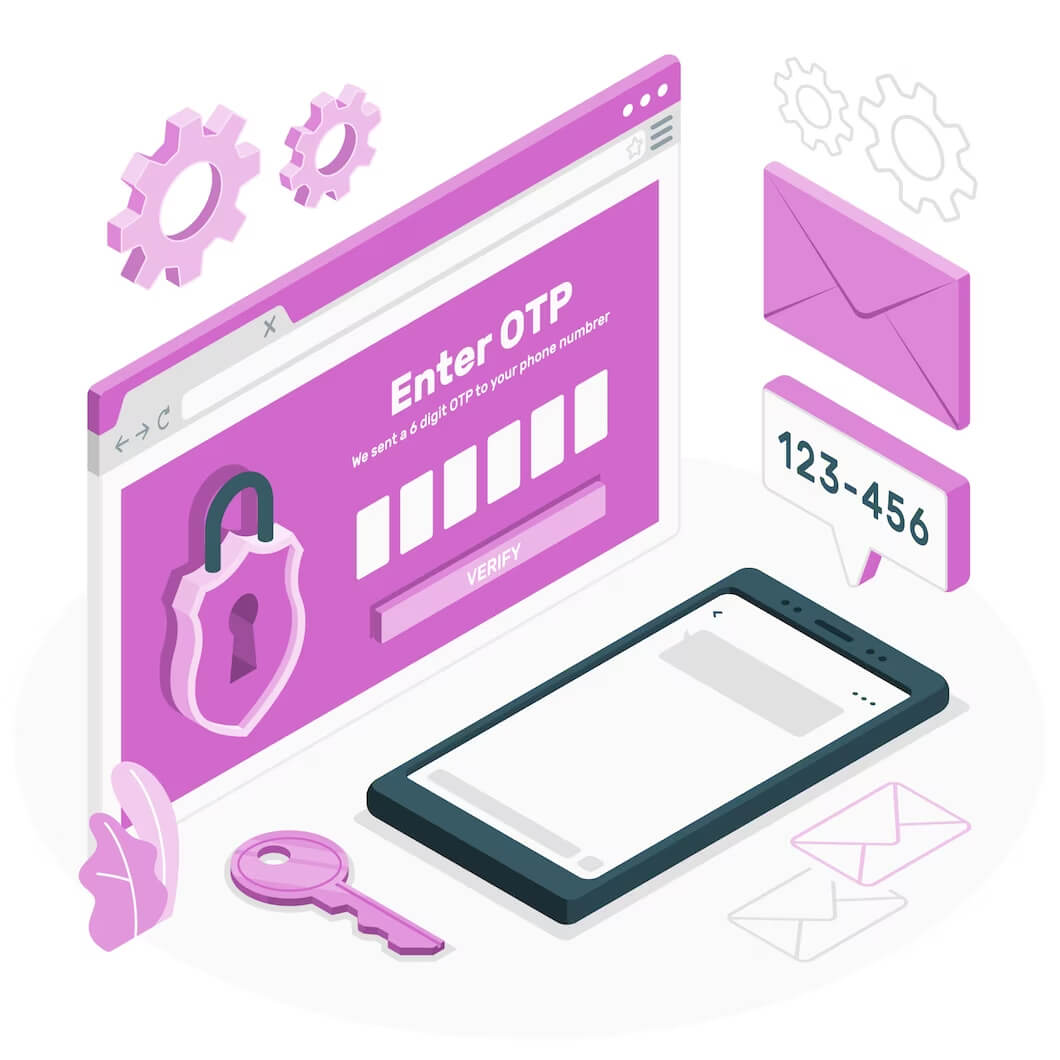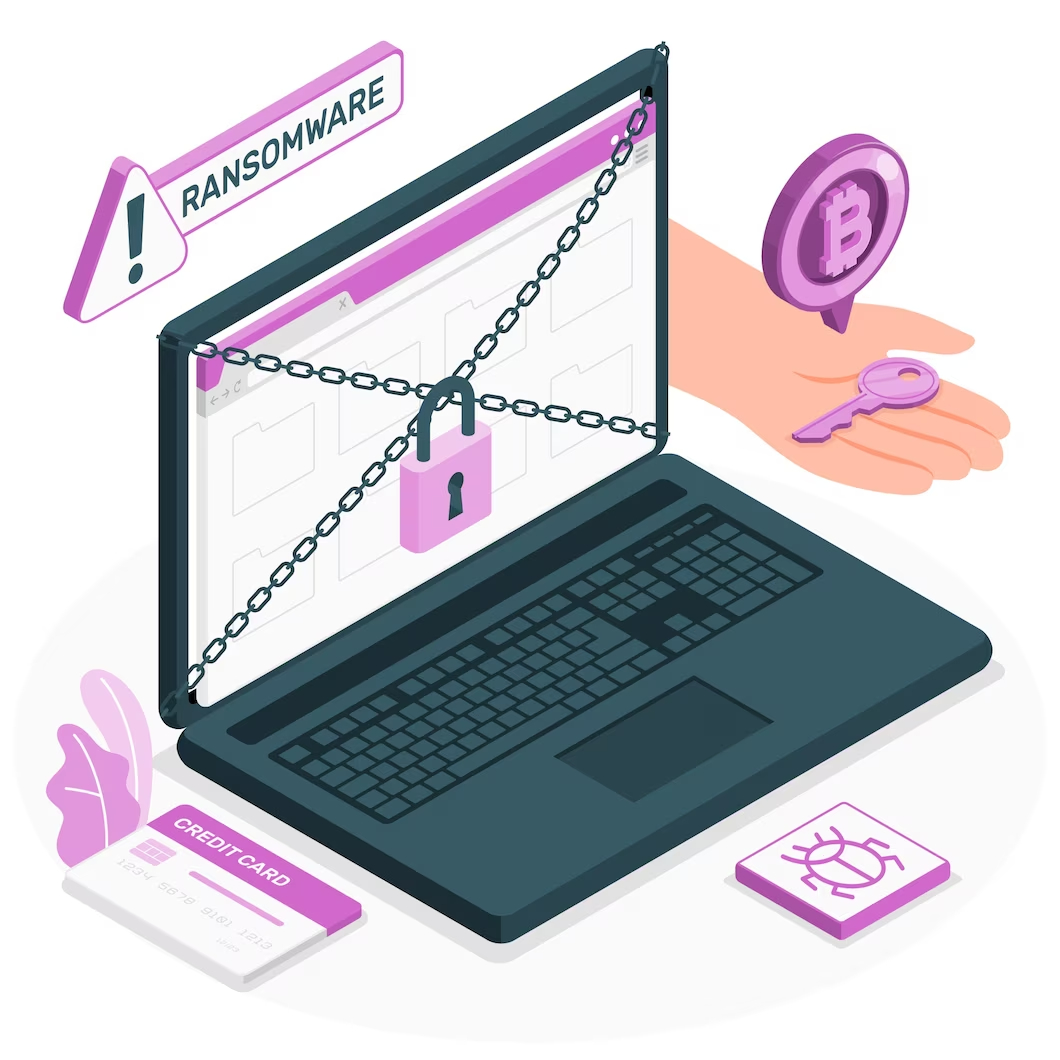Do you suspect that your WordPress site has been hacked? Are you unsure how to check? Or what to do if, in fact, you have a hacked WordPress site? Don’t panic, keep reading to find out how to fix your hacked WordPress website.

- How to check if a WordPress site is hacked?
- Why was my WordPress hacked?
- Different ways WordPress sites are hacked
- What to do if my WordPress site is hacked
- How to fix hacked WordPress websites
- Contact professional WordPress developers to fix your hacked WordPress site
- TL;DR: WordPress is hacked & how to fix it
Discovering that your WordPress is hacked can be a nightmare scenario for any website owner. WordPress is undeniably one of the most 👉 popular content management systems 👈(CMS) in the world. It is powering millions of websites across the internet. Its flexibility, ease of use, and extensive plugin ecosystem make it a go-to choice. It can be a great choice for bloggers, businesses, and organizations alike. However, with great popularity comes great attention from hackers. Hackers constantly seek vulnerabilities to exploit.
Hacking can lead to defacement and data breaches. It can also cause malicious redirects and spam injections. Overall the consequences of a hacked website can be severe. This is true for both the reputation of your site and the security of your visitors’ personal information. Let’s delve into the unsettling reality of a compromised WordPress site. We will provide you with essential steps to help you fix the damage. Also how you can fortify your website against future attacks.
First, we will explore the common signs that indicate your WordPress site has fallen victim to a hack. By recognizing these telltale signs early on, you can take swift action to minimize the damage. Additionally, we will discuss the potential reasons behind these security breaches. We will shed light on the vulnerabilities that hackers exploit and how to prevent them. Next, we will guide you through the essential steps to recover a hacked WordPress site. From isolating the hack and scanning for malware to restoring your website’s functionality. We will provide you with practical advice and best practices to ensure a successful recovery process.
So, if you’re ready to learn let’s dive into the comprehensive guide on fixing a hacked WordPress site and regaining control over your online presence.

How to check if a WordPress site is hacked?
Let’s go over a few ways you can check if your WordPress site was hacked. Some of these include running a website malware scanner, restoring your site from a backup, seeing if you can log in, and seeing if you have any suspicious accounts.
Run a website malware scanner
The first step is to run a malware scanner. Many malware scanners come in the form of a security plugin. We always recommend to our customers use a security plugin like WordFence. It offers users a firewall and malware scanner. If your scanner detects malicious code or a virus, then chances are your WordPress site has been hacked.
Check if you can log in to your site
Make sure you can log onto your website. If you cannot log in chances are someone stole your password, hacked your site, and changed it. Or they removed your user and replaced it with a bunch of fake accounts making your website inaccessible to you.
If you have more than one user account then check if any of those individuals can access your website. But in most cases, hackers will remove original accounts if they are aiming to take over your site.
See if you have any suspicious user accounts on your site
If you are able to log in go to your WordPress dashboard and see what user accounts have access to your site. If you see any suspicious accounts disable and remove them ASAP. A suspicious or unwanted account could be a sign that someone is trying to hack your site.

Why was my WordPress hacked?
There can be several reasons why a WordPress site gets hacked. Your website is more likely to get hacked if it has a lot of traffic or is ranked high on search engines. The more visible your WordPress site is the higher the probability it will get hacked. This is because they are easier to find and chances are they are more worth. A common target of WordPress hacks is government websites, charity webpages, etc. It’s easy to steal data, extort money from WordPress site owners or ruin someone’s reputation.
Also, if your WordPress site doesn’t have basic security, it can be easily hacked. Anyone can check the source code of your website. A WordPress hacker can analyze your code and pretty easily see if it lacks basic security. Moreover, the hacker finds holes in the code which may make your site vulnerable to hacking.
Here are some other common vulnerabilities and factors that can contribute to a site being compromised:
Weak passwords
Using weak or easily guessable passwords makes it easier for attackers to gain unauthorized access to your site. It’s best to avoid passwords such as 12345678. It’s really easy to guess. Also, avoid using the same password for every single thing, because if a hacker gets a hold of that password, they can use it for everything else.
SQL injection
Poorly coded themes or plugins can be susceptible to SQL injection attacks, where an attacker manipulates the site’s database queries to gain unauthorized access.
Cross-site scripting (XSS)
Vulnerabilities in themes or plugins can allow attackers to inject malicious scripts into your site, which can then be executed in users’ browsers.
Malware or malicious code
Malicious code can be injected into your site’s files, themes, or plugins, allowing attackers to gain control or collect sensitive information.
Social engineering
Human error, such as falling for phishing scams or sharing sensitive information with unauthorized individuals, can also lead to site compromises.
It’s important to note that hackers continuously evolve their tactics, and new vulnerabilities can emerge over time. To protect your WordPress site, it’s crucial to follow security best practices. Moreover, it’s necessary to keep your WordPress installation, themes, and plugins up to date. Additionally, you need to use strong passwords, employ security plugins, and regularly back up your site’s data.

Different ways WordPress sites are hacked
Let’s explore the different ways that your WordPress site can be hacked.
Not updating WordPress core, plugins, themes
Many WordPress websites become hacked because core WordPress files are outdated. Moreover, plugins and themes are insecure. Running an outdated version of WordPress or not keeping up with security updates can leave your site vulnerable to known exploits. Additionally, installing themes and plugins from untrusted sources or using outdated versions can introduce security vulnerabilities.
Brute force attacks
Brute force attacks are a common method used to gain unauthorized access to websites, including WordPress sites. The goal of a brute force attack is to systematically guess the correct username and password combination until the attacker finds the right one.
How does it work?
Here’s how a brute force attack typically works on WordPress sites:
1. Username Enumeration:
Attackers often begin by identifying valid usernames on a WordPress site. They can do this by exploiting vulnerabilities or by targeting common usernames such as “admin” or “administrator.”
2. Password Guessing:
Once the attacker has a list of valid usernames, they use automated software or scripts to generate and attempt various passwords repeatedly. The software tries different combinations, starting with common passwords like “123456” or “password” and then moving on to more complex combinations.
3. Multiple Login Attempts:
Brute force attacks involve submitting multiple login attempts rapidly and continuously. Attackers automate this process to test thousands or even millions of combinations within a short period.
4. Account Lockout Prevention:
To avoid detection, attackers often employ techniques to bypass or evade account lockout mechanisms. For example, they may use different IP addresses or proxy servers to distribute login attempts across multiple sources.
5. Successful Login:
If the attacker discovers the correct username and password combination, they gain access to the WordPress site’s administrative panel or dashboard. From there, they can potentially carry out malicious activities, such as defacing the site, stealing data, or installing malware.

Insecure hosting
Insecure hosting environment: If your hosting environment is not properly secured, it can provide an entry point for attackers to exploit your site. Here are a few reasons why insecure hosting can increase the risk of hacking:
- Outdated Software: Insecure hosting environments may run outdated software versions, including the web server, database server, or other components. These outdated versions can have known security vulnerabilities that hackers can target to compromise your site.
- Weak Security Measures: Inadequate security measures by the hosting provider can leave your site vulnerable. This could include weak passwords, lack of two-factor authentication, or insufficient firewall and intrusion detection systems. Without proper security measures in place, hackers can easily gain access to your site.
- Shared Hosting Risks: In shared hosting environments, multiple websites share the same server resources. If one of the sites hosted on the server has weak security, it can potentially provide an entry point for hackers to access other sites on the same server, including your WordPress site.
- Lack of SSL/TLS: Secure Socket Layer (SSL) or Transport Layer Security (TLS) certificates are essential for encrypting data transmitted between the server and users’ browsers. Insecure hosting may lack proper SSL/TLS implementation, making it easier for hackers to intercept sensitive information, such as login credentials or user data.
- Unreliable Support and Monitoring: Insecure hosting providers may have limited or inadequate support and monitoring services. This means that potential security breaches may go unnoticed, or there may be delays in addressing security issues promptly, giving hackers more time to exploit vulnerabilities.
Choose a strong web hosting provider service
It’s crucial to choose a reputable and secure hosting provider that prioritizes website security. A popular hosting provider we recommend for our customers is 👉 Cloudways 👈. Cloudways was created with WordPress sites in mind. Some reasons why we love Cloudways include:
- It is created on top of popular Cloud infrastructures such as AWS, GCP, DigitalOcean, etc.
- You can optimize your WordPress site for performance and speed with the help of this hosting provider
- Offers a user-friendly server management system. You can create backups, monitor server logs, SSL certificate management, etc.
- You adjust your resources and scale your server without any downtime to your website.
- You also gain additional security measures such as security patching & dedicated firewalls.
- This web hosting provider offers 24/7 customer service. This is crucial if, in fact, something goes wrong. You don’t want to wait for an answer hours or days later if your website is hacked.
- Lastly, it is cost-effective. It has a flexible payment plan and even a pay-as-you-go model. Moreover, you can scale your site and the cost as you need.

File permissions
Wrong file permissions can pose a significant security risk to a WordPress site. It can lead to potential hacking and unauthorized access. Incorrect file permissions or improperly configured server settings can allow attackers to gain unauthorized access to your site’s files and directories.
File permissions control who can read, write, and execute files on a server. If these permissions are set incorrectly, they can provide an avenue for malicious actors to exploit vulnerabilities in the WordPress installation. For example, if a file or directory has overly permissive permissions. It means that anyone can change or execute it, including attackers. They can upload malicious scripts or tamper with crucial files. Also, they can inject harmful code into the website. All these things can lead to the compromising of its integrity and functionality.
Moreover, incorrect file permissions can allow unauthorized access to sensitive configuration files. Files such as wp-config.php, contain database credentials. By gaining access to this file, hackers can potentially get valuable information. This information can help them gain control over the entire WordPress site. So, it is crucial to set file permissions properly. Also, you should regularly review and update them to mitigate security risks. Also, this will ensure the protection of a WordPress site.
Password Theft
Another common way your WordPress site might get hacked is by someone stealing your password. Password theft is common when WordPress users use generic passwords. Passwords such as 1234, abcd, etc. Moreover, it’s even easier if your username is admin or log-in. You are making it really easy for someone to hack your site.
What to do if my WordPress site is hacked
So if in fact your site is hacked, the first you want to do is not panic. Take a deep breath and don’t panic. There are things that can be done to save your site. Moreover, there are things that can be done to fix your site after it has been hacked. Let’s explore what you need to do once you realize that your WordPress site was hacked.
Take your site offline
You want to contact your hosting provider to take your WordPress site offline. Taking your WordPress site offline after it has been hacked is an important step in the process of recovering and securing your website. Here are a few reasons why it is recommended to take your WordPress site offline:
Contain the damage:
By taking your site offline, you prevent the hacker from further exploiting vulnerabilities or causing more harm. It helps contain the damage and reduces the risk of sensitive information being compromised or additional malicious activities occurring on your site.
Protect visitors and users:
If your site has been compromised, it may pose a threat to your visitors or users. Hackers can inject malware, phishing scripts, or malicious redirects that can harm those who access your site. Taking it offline ensures that no one unknowingly stumbles upon the compromised site and protects them from potential harm.
Preserve evidence:
Keeping your site offline allows you to preserve evidence of the hacking incident. This evidence can be valuable when investigating the breach, understanding how it occurred, and taking measures to prevent similar incidents in the future. It helps security experts or forensic analysts identify the vulnerabilities and potential entry points used by the hacker.
Perform thorough cleanup:
Taking your site offline gives you the opportunity to thoroughly clean up your WordPress installation. You can remove any malicious code, infected files, or compromised plugins or themes. This cleanup process is easier to perform when the site is offline, as it reduces the chances of any active malicious scripts interfering with the cleanup process.
Implement security measures:
While your site is offline, you can implement additional security measures to fortify your WordPress installation. This includes updating all themes, plugins, and the WordPress core to their latest versions, changing all passwords (including database passwords, FTP accounts, and admin credentials), and reviewing and enhancing security configurations.
Once you have taken your WordPress site offline, it is crucial to investigate the breach, identify the vulnerabilities, and take appropriate measures to prevent future attacks. Working with security experts or reaching out to the WordPress community can provide guidance on how to secure your site and mitigate the risks of future hacking incidents.

Restore your site from a backup
You need to restore your site using backup WordPress files. You should have backups of your site created on a regular basis. Creating a backup for your site can be done in multiple different ways.
You may consider using a backup plugin to create backup files for your website on a cyclical basis. Using a plugin to create backups is convenient but all those files are stored on your server. They are taking up space. Also, if your website is hacked, you may have trouble accessing them. So this shouldn’t be your only method to create backups for your site.
Another option is to have your hosting provider create backups of your website on a regular basis. The only problem with this option is if the hosting provider creates the backup on the same server as your website. Then if your website gets hacked, your backups are vulnerable as well. So you definitely, don’t want to just rely on a hosting provider backup.
Lastly, you should have a developer create manual backups of your website. When you have a third-party create manual backups of your site, they can store them on a cloud, making them hopefully inaccessible to hackers.
Regardless of where you get your backup from, you can use it to hopefully restore your site before it was hacked. This way you can offer users a website that actually works and isn’t compromised. Moreover, it’s much easier and faster to restore your site from a backup than rebuild from scratch. Not to mention it’s less expensive to rebuild using a backup than having to go through the entire 👉 WordPress development 👈 process from start to finish.

Reset passwords
The next key step is to reset your WordPress website passwords. You can create strong passwords with the help of a generator. A generator will create a password that contains letters, numbers, and special characters. This password won’t resemble anything similar to a word or known password. Also, make sure to reset the passwords of all your accounts. You need to make sure that every single user who has permission to enter your site has a strong password. You should also change the URL when logging into your WordPress site.
The URL when logging into your WordPress site should not just be /admin or /login, as both of these a predictable. This will make it easier yet again for a hacker to try and access your site.
Moreover, you can install security plugins that limit the number of login attempts allowed within a specific timeframe. This helps prevent brute force attacks by locking out IP addresses that exceed the limit.
Also, you should enable Two-Factor Authentication (2FA) for your WordPress site. This adds an additional layer of security by requiring users to provide a second form of authentication, such as a unique code sent to their mobile device, in addition to the password.
Lastly, you should consider implementing captcha or reCAPTCHA challenges on the login page. This can help differentiate between legitimate users and automated bots.

Remove unwanted files.
Removing unwanted files is a crucial step when dealing with a hacked WordPress site. Here are several reasons why you should remove these files:
1. Security:
Unwanted files may contain malicious code or scripts that could compromise the security of your website. Hackers often inject such files to gain unauthorized access, install backdoors, or exploit vulnerabilities. By removing these files, you reduce the risk of further attacks. Also, you are ensuring a safer environment for your website.
2. Reinfection Prevention:
If your WordPress site has been hacked once, it’s important to remove any remaining unwanted files to prevent reinfection. Hackers often leave hidden files or backdoors that can be used to regain access or reinfect your website. By removing these files, you close potential avenues for future attacks.
3. Performance:
Unwanted files can slow down your website’s performance. They may consume server resources, impact database queries, or cause conflicts with legitimate files. By eliminating unnecessary files, you can improve the overall speed and efficiency of your WordPress site.
4. Cleanup and Organization:
Hacked websites can contain a multitude of unwanted files, such as injected scripts, spam links, or modified core files. Removing these files helps clean up your site and restore it to its original state. It also allows you to organize your files and ensure that only necessary and trusted components remain.
5. Compliance and Reputation:
A hacked WordPress site can have severe consequences for your online reputation and may violate legal and compliance requirements, depending on the nature of the hack. By promptly removing unwanted files, you demonstrate your commitment to security, protect sensitive data, and maintain the trust of your visitors and customers.
When removing unwanted files from a hacked WordPress site, it’s important to follow a comprehensive approach. Start by identifying the malicious files through security plugins or by scanning your website’s directory manually. Take appropriate backup measures before removal, as some files may be necessary for the proper functioning of your site. Additionally, ensure that you have addressed the vulnerabilities that led to the hack to prevent future incidents.
Remember, it’s always recommended to seek professional assistance from a cybersecurity expert or a trusted WordPress professional to ensure a thorough cleanup and secure your website effectively.

Clean out your sitemap.
Cleaning out your sitemap is not necessarily a direct step in the process of recovering from a hacked WordPress site. However, it may be recommended as a best practice to ensure that your website is fully cleaned. Moreover, it is functioning properly after a security incident. Here’s why:
You can remove malicious links
When a WordPress site is hacked, attackers may inject malicious links into your sitemap. These links can lead to spammy or harmful websites. Cleaning out your sitemap helps to eliminate these malicious links. Also, it will prevent your visitors from being redirected to harmful content.
Reinstate your website in search engine rankings
If search engines like Google detect malware or suspicious links on your website, they may flag it as potentially harmful and remove it from search results. Cleaning out your sitemap and removing any malicious content helps restore your website’s reputation. Also, it will help boost its search engine rankings.
Can help you improve website performance
A hacked website may contain additional files, scripts, or code that can negatively impact your site’s performance. By cleaning out your sitemap, you ensure that only legitimate and necessary content is included. This will help in improving the overall speed and performance of your website.
Prevent re-infection of your WordPress site
Hackers often leave backdoors or hidden malware on compromised websites. This can lead to re-infection if not properly addressed. Cleaning out your sitemap is part of a comprehensive security process. This security process includes removing all malicious code and patching vulnerabilities. Along with strengthening security measures to minimize the risk of future hacks.
Remember, cleaning out your sitemap is just one step in the overall process of recovering from a hacked WordPress site. It’s crucial to follow a thorough security protocol, including scanning and cleaning all files. While also ensuring that plugins and themes are up to date. Moreover, updating WordPress and its components is crucial to boost security. You should also consider strengthening passwords and implementing security plugins to safeguard your website against future attacks.
Reinstall plugins and themes, and WordPress core.
You need to reinstall WordPress core files along with plugins and themes. You will need to go over the process of installing WordPress all over again. Moreover, you will need to reinstall your WordPress theme whether that be custom-made or pre-made. Additionally, you will also need to reinstall WordPress plugins.
Something important to note about plugins is not to go crazy with plugins. The optimal amount of plugins you should have installed on your site is between 10 to 20. There shouldn’t be a scenario where you have 40,50, or 100 plugins on your site.
Additionally, everything that you reinstall should be the latest version to ensure that you get the latest security patches. Moreover, you get any new features that the new software may come with. The best way to reinstall all these aspects is to hire a professional WordPress developer, who understands the process and can do it for you quickly and properly.

Clean out your database if necessary.
Cleaning out your database is an important step after a WordPress site has been hacked. This is because the database often contains valuable information that can be compromised during a security breach. Here are a few reasons why cleaning out the database is necessary:
1. Remove malicious code:
Hackers often inject malicious code into the database. This unfortunately can lead to further security vulnerabilities and unauthorized access. By cleaning out the database, you can remove any suspicious or unauthorized code that may have been added by the attacker.
2. Eliminate backdoors:
Hackers sometimes create backdoor access points in the database to maintain control over the compromised site even after initial security measures are taken. Cleaning the database ensures that any hidden backdoors are removed. Therefore, preventing unauthorized access in the future.
3. Protect user data:
If your website collects and stores user information. Information such as usernames, passwords, email addresses, or personal details, a database breach can expose this sensitive data. Cleaning the database helps safeguard the privacy and security of your users by removing any compromised or unauthorized access to their information.
4. Prevent future attacks:
A compromised database can serve as a launching pad for future attacks. By cleaning out the database and strengthening your site’s security measures, you reduce the risk of repeated hacking attempts, Also, you protect your site from further compromises.
To effectively clean out your database after a hack, it is advisable to work with a professional or knowledgeable developer. An expert can identify and remove any malicious code and conduct security audits. Moreover, they can implement necessary security measures to prevent future breaches. Additionally, it is crucial to update all themes, plugins, and WordPress core files to their latest versions. This will help to mitigate vulnerabilities that may have been exploited by the attacker.

How to fix hacked WordPress websites
If your WordPress website has been hacked, it’s important to take immediate action to fix the issue and secure your website. Here are the steps you can follow to fix a hacked WordPress website:
1. Identify the hack:
Determine the extent of the hack and how it has affected your website. Look for any suspicious files, unauthorized changes, or unusual behavior.
2. Take the website offline:
Temporarily take your website offline by putting up a maintenance page or “under construction” message. This will prevent further damage and protect your visitors from any malicious content.
3. Change all passwords:
Start by changing the passwords for your WordPress admin account, FTP (File Transfer Protocol) accounts, hosting account, and any other accounts associated with your website. Use strong, unique passwords for each account.

4. Update WordPress and plugins:
Ensure that your WordPress core files, themes, and plugins are all up to date. Outdated software can be vulnerable to hacking attempts. Update them to the latest versions provided by trusted sources.
5. Scan for malware:
Run a malware scan on your website using security plugins like Sucuri, Wordfence, or MalCare. These plugins can help identify and remove malicious code from your WordPress files.

6. Remove malicious code and files:
If the malware scan detects any malicious code or files, remove them immediately. You can manually delete suspicious files from your WordPress installation using an FTP client or file manager provided by your hosting provider.
7. Restore from a clean backup:
If you have a recent backup of your website that you know is clean, restore your website from that backup. Ensure that the backup was taken before the hack occurred to avoid reintroducing any malicious code.
8. Harden your website’s security:
Enhance your website’s security to prevent future attacks. You can harden 👉 WordPress security 👈 through the help of plugins, additional code, etc.
9. Monitor and strengthen your website’s security:
Continuously monitor your website for any suspicious activity or signs of a new hack. Consider implementing a website firewall or a website security monitoring service to further enhance your website’s security.
Remember, if you’re not confident in your ability to fix a hacked website, it’s always a good idea to seek professional help from a WordPress security expert or a website security company. They can provide more targeted assistance based on your specific situation.
Do you want to check the health of your website?

Contact professional WordPress developers to fix your hacked WordPress site
The best thing you can do if you suspect that your WordPress site has been hacked is to contact a professional 👉 WordPress Support 👈 company. They will be able to help you address the problem and implement a solution.
Here at Acclaim, our developers know that in order to win with a hacker, virus, or bot, you need to find the cause, not the result. They are able to find and identify the cause. Once they find the cause, they work on removing it. Then they can remove the result, so all the strange additional code.
Once the clean-up is complete they can restore your site to its original glory. Hopefully, you have a backup making the restoration process easier. Also, it’s important that the backup is not stored on the same web server as your website. If it is then chances are these backup website files may have also been hacked.
They will be able to set up your WordPress site so that it is good as new, hopefully using a good backup. Moreover, our Acclaim developers will add additional security measures to ensure that your site is better protected from hackers.

TL;DR: WordPress is hacked & how to fix it
Let’s summarize how you can check if in fact WordPress is hacked. Moreover, what you can do once this happens, and how to get your site back to functioning properly?
Why don’t we start with how to check if your WordPress is hacked? Well, there are a few things that you can do yourself, to see if your site has been hacked.
Is my site in fact hacked?
- Run a website malware scanner
- Check if you can log in to your site
- See if you have any suspicious user accounts on your site
If a malware scanner indicates a problem, or you cannot log in, or perhaps there are suspicious accounts you may have a hacker. Your site may have been hacked for a number of reasons some of these may include:
- Your website is highly visible on search engines & receives lots of traffic
- Your source code reveals that you don’t have basic WordPress security
- Using weak passwords that are easy to guess makes your site more vulnerable
- Poorly coded themes or plugins can make your site vulnerable to SQL injections
- Moreover, your site can be vulnerable to cross-site scripting
- Human error such as falling for phishing scams can result in data leaks
Now your WordPress website could have been hacked in a variety of different ways. Hackers are clever in using various vulnerabilities to exploit your site. Some of the different ways WordPress is hacked are:
- Using security holes because you’re not updating your WordPress core, plugins, or themes
- Brute force attacks have enabled access to your site
- Taking advantage of poor security from your insecure hosting service
- Implementing the wrong file permissions make your site easily accessible
- Someone stole your password and has been able to gain access to your site
But don’t worry there are things that you can do if you realize that your WordPress site has indeed been hacked.
Some key steps that you can take once your WordPress site have been hacked include:
- Contact your hosting provider to take your site offline
- Restore your site from a clean backup, so one that hasn’t been infected
- Reset all your passwords
- Remove all suspicious and unwanted files
- Clean up your WordPress site’s sitemap
- Reinstall WordPress, WordPress plugins, and themes
- Clean out your database if necessary
Is it time to reach out to the professionals?
But if you are not a tech-savvy person, you may consider contacting a WordPress support company to help you fix your hacked WordPress website. They will be able to take a professional approach to fixing your website. They will be able to locate the reason for the problem, fix it, and then fix the results.
This way you get your WordPress site back and running properly in no time. Not to mention you will be able to avoid the headache of trying to do it all yourself.
If you want to learn more about what to do when WordPress is hacked. 👉 Drop us a line 👈 and let’s chat. We can provide you with a free no-obligation chat about how to fix a hacked WordPress website. Also, we can talk about security measures and so much more.
Comments